Anchors Aweigh (1945)
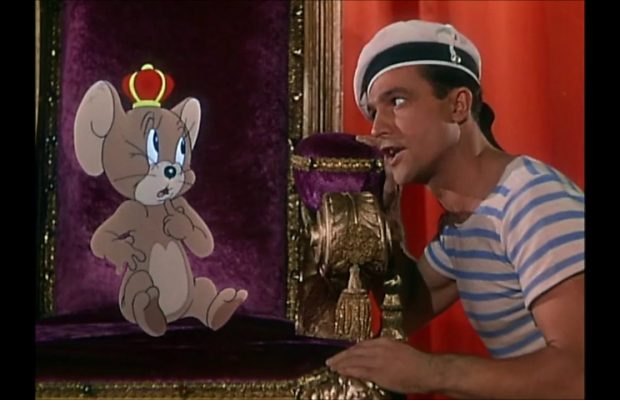
Toronto Film Society presented Anchors Aweigh (1945) on Sunday, October 24, 1982 in a double bill with Lili as part of the Season 35 Sunday Afternoon Film Buffs Series “A”, Programme 1.
Production Company: Metro-Goldwyn-Mayer. Producer: Joe Pasternak. Director: George Sidney. Screenplay: Isobel Lennart, based on a story by Natalie Marcin. Photography: Robert Planck and Charles Boyle (in TECHNICOLOR). Film Editor: Adrienne Fazan. Art Direction: Cedric Gibbons and Randall Duell. Set Decoration: Edwin B. Willis and Richard Pefferle. Sound Recorder: James Z. Flaster. Costumes: Irene and Kay Dean. Makeup: Jack Dawn. Assistant Director: George Rheim. color Consultant: Henri Jaffa. “Tom and Jerry” Cartoon Direction: fred Qumby. Musical Supervision and Conductor: George Stoll. Frank Sinatra’s Vocal Arrangements: Axel Stordahl. Kathryn Grayson’s Vocal Arrangements: Earl Brent. Incidental score: George Stoll and Calvin Jackson. Orchestrations by: Ted Duncan, Joseph Nussbaum, Robert Franklyn and Wally Heglin. Dance Sequences created and choreographed by: Gene Kelly and Stanley Donen. Songs: “We Hate to Leave”, “What Wakes the Sunset?”, “The Charm of You”, “I Begged Her” and “I Fall in Love Too Easily” by Jule Styne (music) and Sammy Cahn (lyrics); “Lullaby” by Johannes Brahms; “The Worry Song” by Ralph Freed and Sammy Fain; “Jealousy” by Vera Bloom and Jacob Gade; “Donkey Serenade” by Bob Wright, Chet Forrest and Rudolph Friml; “My Heart Sings” by Harold Rome, Herpin; “if You Knew Susie” byJoseph Meyer and Buddy De Sylva, with new lyrics by Sammy Cahn; “Waltz” by Tchaikovsky; “Largo Al Factotum” by Rossini; part of Tchaikovsky Piano Concerto No. 1 in B flat Minor; Second Hungarian Rhapsody by Liszt; “Anchors Aweigh” by Alfred H. Miles, Royal Lovell and Charles A. Zimmerman.
Cast: Gene Kelly (Joseph Brady), Frank Sinatra (Clarence Doolittle), Kathryn Grayson (Susan Abbott), Jose Iturbi (Himself), Dean Stockwell (Donald Martin), Carlos Ramirez (Carlos), Henry O’Neill (Admiral Hammond), Leon Ames (Commander), Rags Ragland (Police Sergeant), Edgar Kennedy (Police Captain), Pamela Britton (Girl from Brooklyn), Henry Armetta (Hamburger Man), Billy Gilbert (Cafe Manager), Sharon McManus (Little Girl Beggar), James Burke (Studio Cop), James Flavin (Radio Cop), Chester Clute (Iturbi’s Assistant), Grady Sutton (Bertram Kramer), Peggy Maley (Lana Turner Double), Sondra Rodgers (Iturbi Secretary), Garry Owen, Steve Brodie (Soldiers), Charles Coleman (Butler), Milton Parsons (Bearded Man), Renie Riano (Waitress), Alex Callam (Commander), William Forrest (Movie Director), Ray Teal (Assistant Movie Director), Milton Kibbee (Bartender), Harry Barris, John Jams, Wally Cassell, Douglas Cowan, Henry Daniels, Jr., Phil Hanna., William “Bill” Phillips, Tom Trout (Sailors).
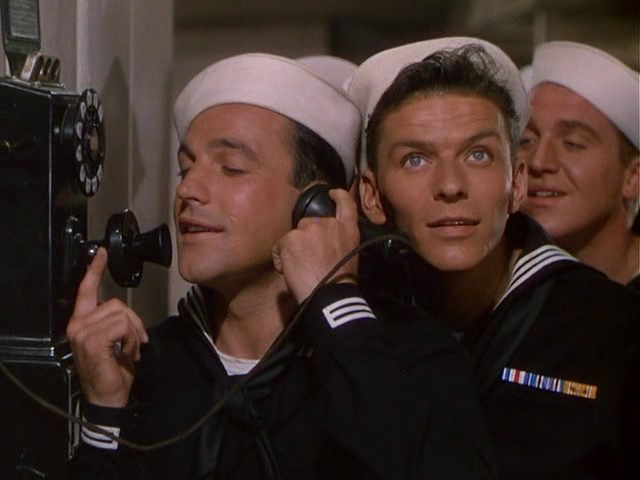
Anchors Aweigh was one of the most popular and successful musical films of the entire 1940s–it was the second ranking film of 1945 at the box-office, and was nominated for five Academy Awards, for Best Picture of 1945, Best Performance by an Actor (Gene Kelly), Best Color Cinematography, Best Song (“I Fall In Love Too Easily”) and Best Scoring of a Musical Picture, the only Oscar it actually won. Much of the film’s appeal is still evident in 1982. Firstly, the film featured three stars of musical films in the early blossoming of their careers. Anchors Aweigh was the eighth film in the fourth year of a forty-plus film and forty-plus year career of Gene Kelly. It was Frank Sinatra’s sixth film (but only third starring role) in the fifth year of a fifty-plus film and forty-plus year career. Similarly, it was Kathryn Grayson’s sixth film in the fifth year of a twenty film, fifteen year career. Secondly, Anchors Aweigh was an amalgamation of many of the popular escapist cliches of wartime America–servicemen on leave; budding romance; mischievous children; popular music and song blended with “high class”, classical music; Technicolor film; and cartoon performers.
Most of what “clicked” in 1945 still works in 1982. Gene Kelly had just begun exerting the complete control over film choreography that eventually made him a legendary figure of the genre. In Anchors Aweigh Kelly does three important dance numbers that express an impressive variety of style. The first is his “Mexican Hat Dance” with a little beggar girl played by Sharon McManus. Then comes an elaborate fantasy, a prelude to his role in The Pirate, danced to the Spanish fandango music of “La Cumparsita”. The highlight of Anchors Aweigh is the third dance, a combination cartoon/live action piece with the mouse Jerry, of Tom and Jerry fame. This four minute production took two months to complete, involving over ten thousand painted frames of film and a budget of $100,000. But the segment has become a classic piece of dance fantasy, and elicits joy and amazement whenever it is played. Kathryn Grayson, although she never quite became a film musical superstar of the Deanna Durbin/Judy Garland rank, brightened several MGM musicals of the 1940s and early 1950s with her operatically trained voice and pleasant looks. Her role as the movie extra looking for an audition with pianist Jose Iturbi in Anchors Aweigh provided the basis of the film’s storyline. And Frank Sinatra was at the paramount of his early career in 1945 as the hottest young singer in the world. Anchors Aweigh is one of the most purely entertaining and enjoyable films of the 1940s. It has several kinds of popular music, segments of the classics, important contributions to the art of dance on film, and fun–an unbeatable combination!
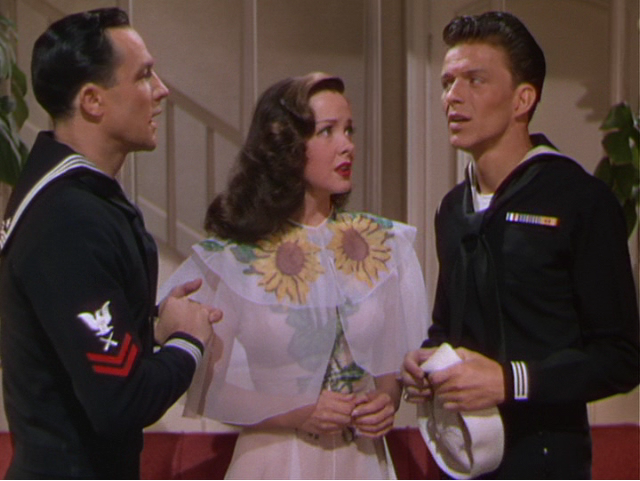
George Sidney, the director, is an unheralded director specializing in musical and show-biz films. Born in 1911, and a former musician, Sidney deserves credit for Thousands Cheer (1943), The Harvey Girls (1946), The Three Musketeers (1948), Annie Get Your Gun (1950), Showboat (1951), Scaramouche (1952), Kiss Me Kate (1953), The Eddy Duchin Story (1956), Jeanne Eagels (1957), Pal Joey (1957), Who Was That Lady? (1959) and Bye Bye Birdie (1962). None of these were major films, but several were memorable, and all were entertaining.
Notes by Jaan Salk

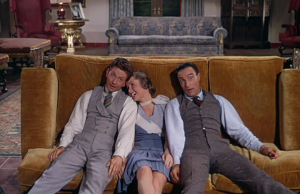
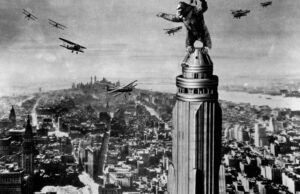
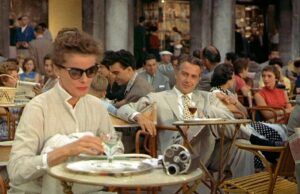






Leave a Reply